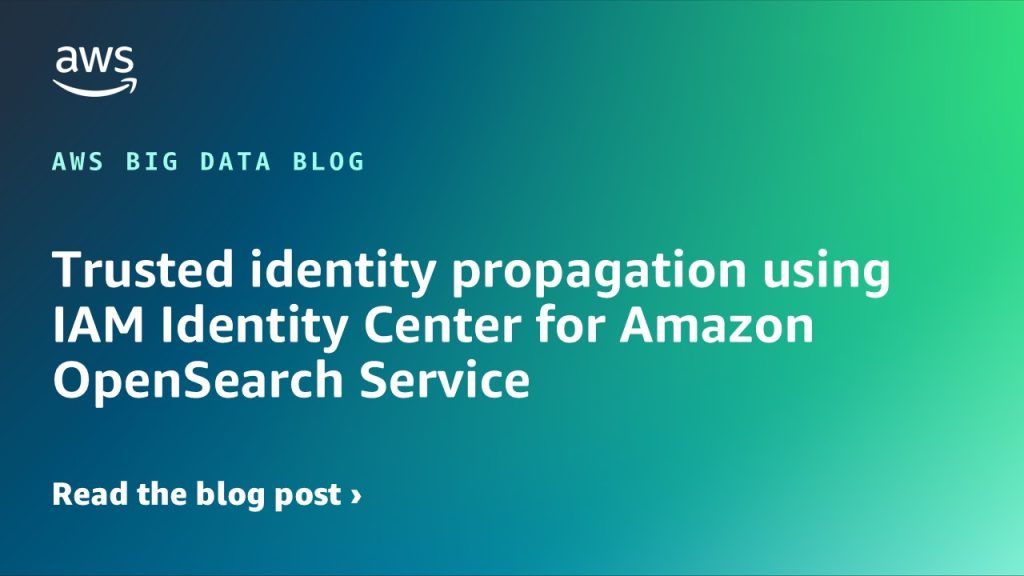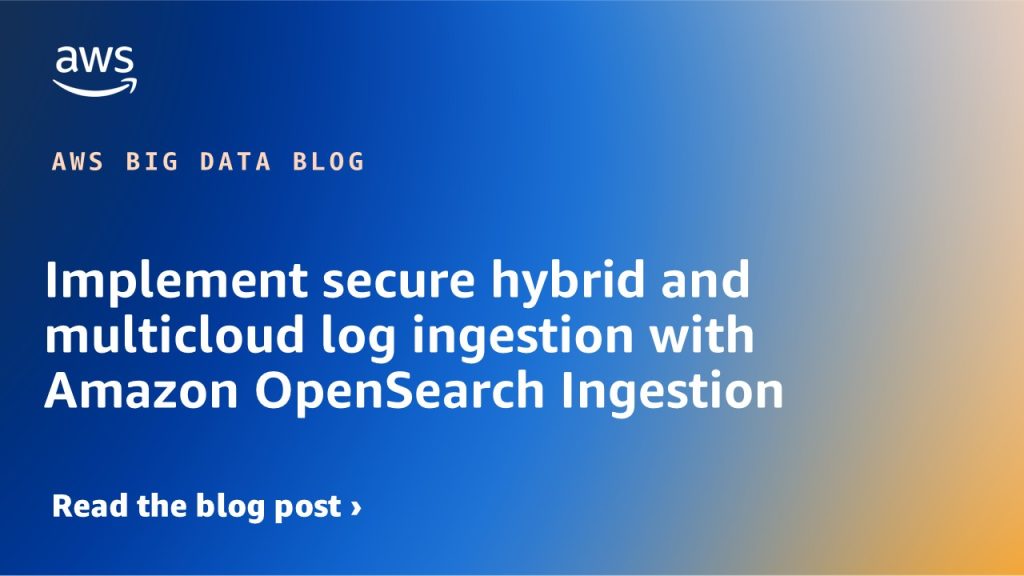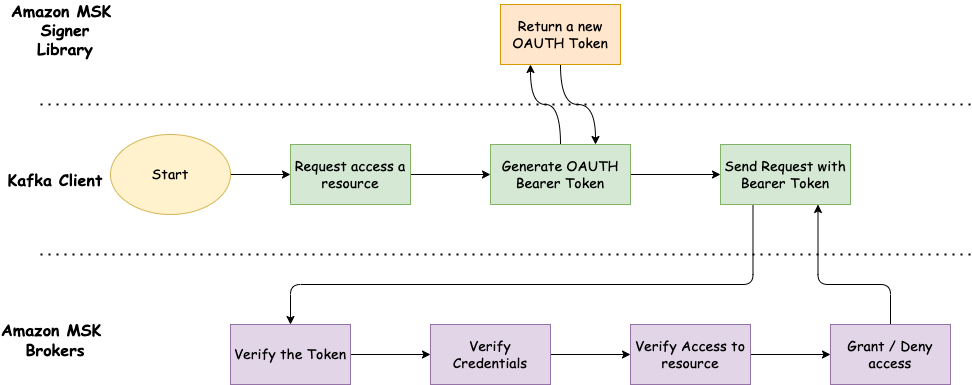AWS Big Data Blog
Category: AWS Identity and Access Management (IAM)
Trusted identity propagation using IAM Identity Center for Amazon OpenSearch Service
Now, by using trusted identity propagation, IAM Identity Center provides a new, direct method for accessing data in OpenSearch Service. In this post, we outline how you can take advantage of this new access method to simplify data access using the OpenSearch UI and still maintain robust role-based access control for your OpenSearch data.
Implement secure hybrid and multicloud log ingestion with Amazon OpenSearch Ingestion
In this post, we demonstrate how to configure Fluent Bit, a fast and flexible log processor and router supported by various operating systems, to securely send logs from any environment to OpenSearch Ingestion using IAM Roles Anywhere.
Amazon SageMaker Lakehouse now supports attribute-based access control
Amazon SageMaker Lakehouse now supports attribute-based access control (ABAC) with AWS Lake Formation, using AWS Identity and Access Management (IAM) principals and session tags to simplify data access, grant creation, and maintenance. In this post, we demonstrate how to get started with SageMaker Lakehouse with ABAC.
Accelerate your analytics with Amazon S3 Tables and Amazon SageMaker Lakehouse
Amazon SageMaker Lakehouse is a unified, open, and secure data lakehouse that now seamlessly integrates with Amazon S3 Tables, the first cloud object store with built-in Apache Iceberg support. In this post, we guide you how to use various analytics services using the integration of SageMaker Lakehouse with S3 Tables.
Federate to Amazon Redshift Query Editor v2 with Microsoft Entra ID
In this post, we explore the process of federating into AWS using Microsoft Entra ID and AWS Identity and Access Management (IAM), and how to restrict access to datasets based on permissions linked to AD groups. We guide you through the setup process, and demonstrate how to seamlessly connect to the Redshift Query Editor while making sure data access permissions are accurately enforced based on your Microsoft Entra ID groups.
Take manual snapshots and restore in a different domain spanning across various Regions and accounts in Amazon OpenSearch Service
This post provides a detailed walkthrough about how to efficiently capture and manage manual snapshots in OpenSearch Service. It covers the essential steps for taking snapshots of your data, implementing safe transfer across different AWS Regions and accounts, and restoring them in a new domain. This guide is designed to help you maintain data integrity and continuity while navigating complex multi-Region and multi-account environments in OpenSearch Service.
Integrate Tableau and Okta with Amazon Redshift using AWS IAM Identity Center
This blog post is co-written with Sid Wray and Jake Koskela from Salesforce, and Adiascar Cisneros from Tableau. Amazon Redshift is a fast, scalable cloud data warehouse built to serve workloads at any scale. With Amazon Redshift as your data warehouse, you can run complex queries using sophisticated query optimization to quickly deliver results to […]
Amazon MSK IAM authentication now supports all programming languages
The AWS Identity and Access Management (IAM) authentication feature in Amazon Managed Streaming for Apache Kafka (Amazon MSK) now supports all programming languages. Administrators can simplify and standardize access control to Kafka resources using IAM. This support is based on SASL/OUATHBEARER, an open standard for authorization and authentication. Both Amazon MSK provisioned and serverless cluster […]
Build streaming data pipelines with Amazon MSK Serverless and IAM authentication
Amazon’s serverless Apache Kafka offering, Amazon Managed Streaming for Apache Kafka (Amazon MSK) Serverless, is attracting a lot of interest. It’s appreciated for its user-friendly approach, ability to scale automatically, and cost-saving benefits over other Kafka solutions. However, a hurdle encountered by many users is the requirement of MSK Serverless to use AWS Identity and Access Management (IAM) access control. At the time of writing, the Amazon MSK library for IAM is exclusive to Kafka libraries in Java, creating a challenge for users of other programming languages. In this post, we aim to address this issue and present how you can use Amazon API Gateway and AWS Lambda to navigate around this obstacle.
Multi-tenancy Apache Kafka clusters in Amazon MSK with IAM access control and Kafka Quotas – Part 1
With Amazon Managed Streaming for Apache Kafka (Amazon MSK), you can build and run applications that use Apache Kafka to process streaming data. To process streaming data, organizations either use multiple Kafka clusters based on their application groupings, usage scenarios, compliance requirements, and other factors, or a dedicated Kafka cluster for the entire organization. It […]









